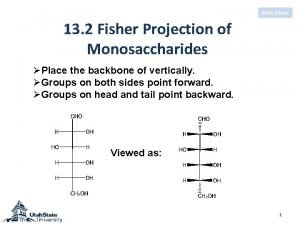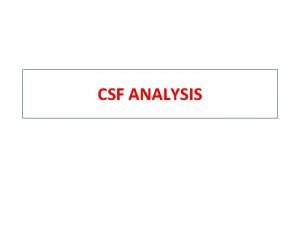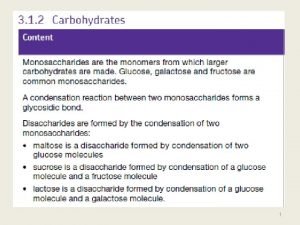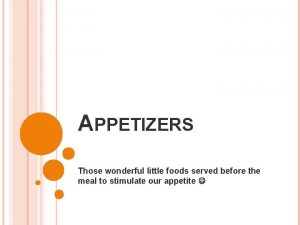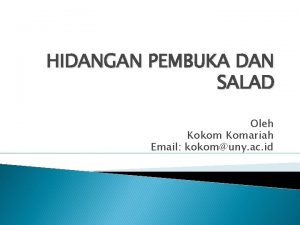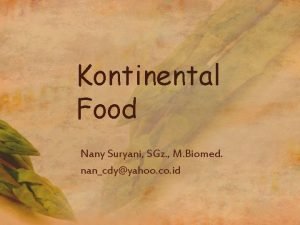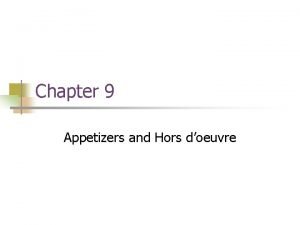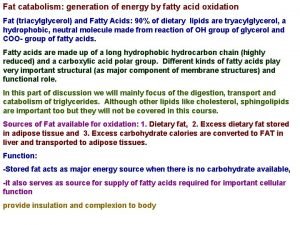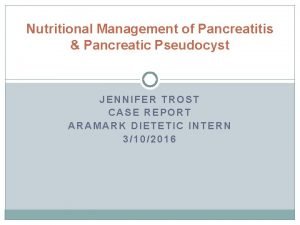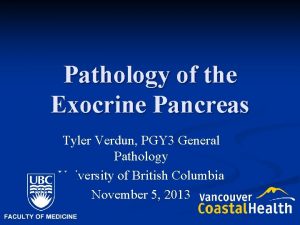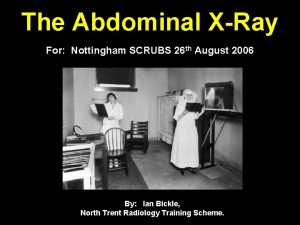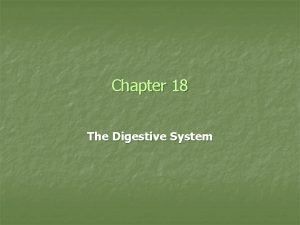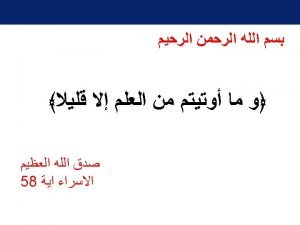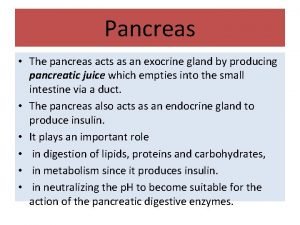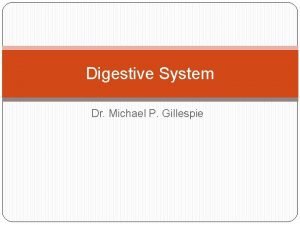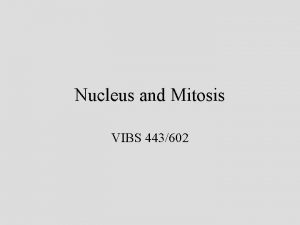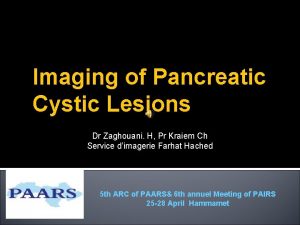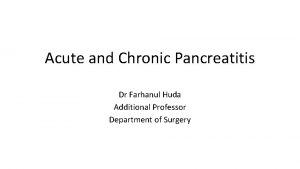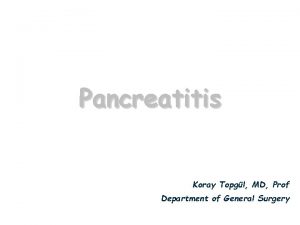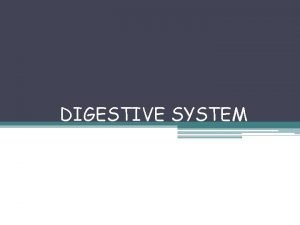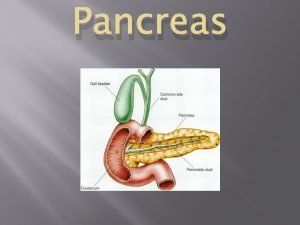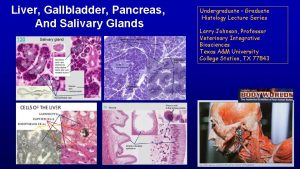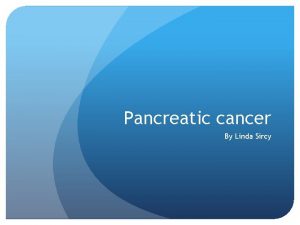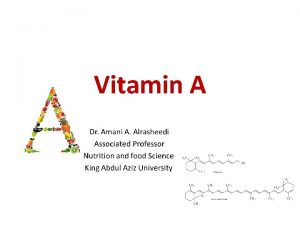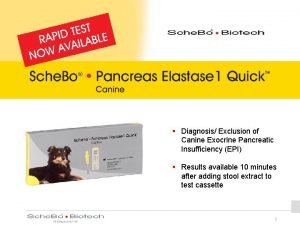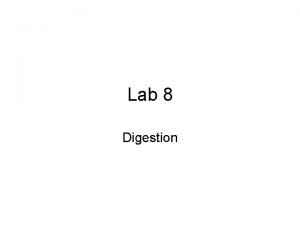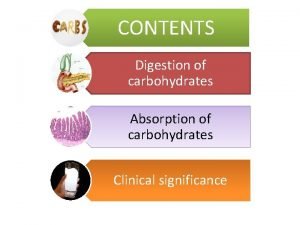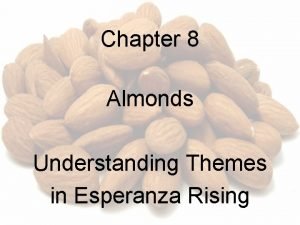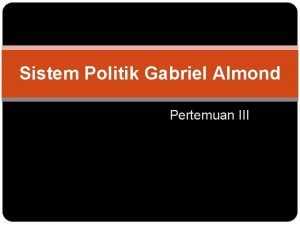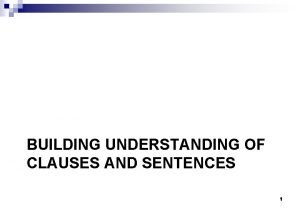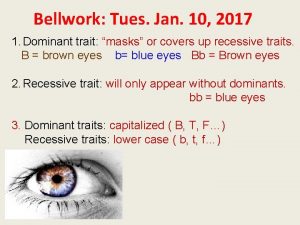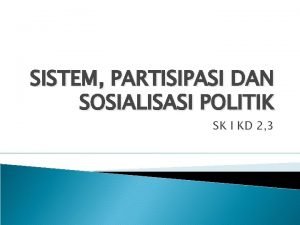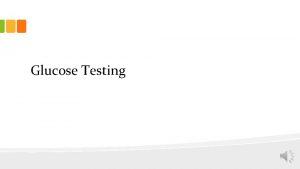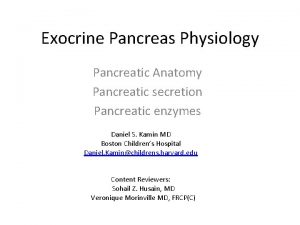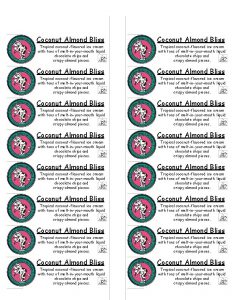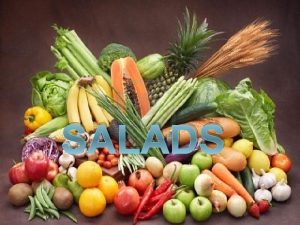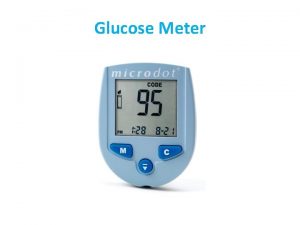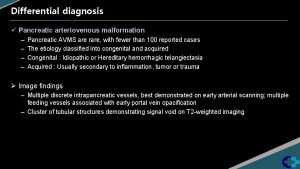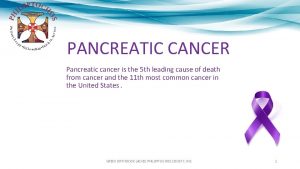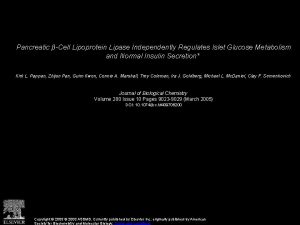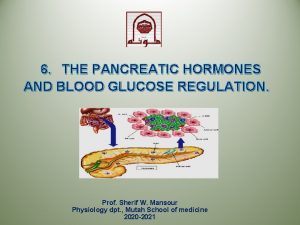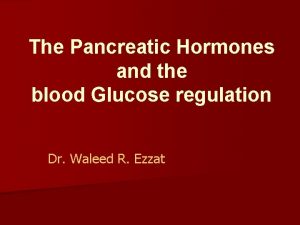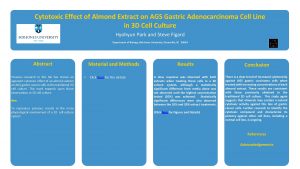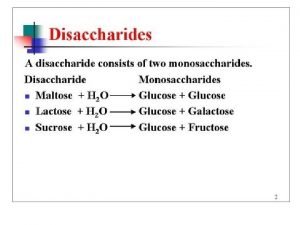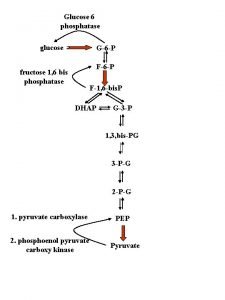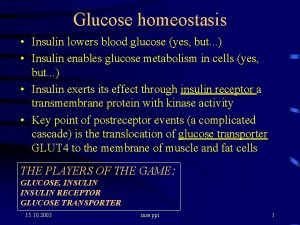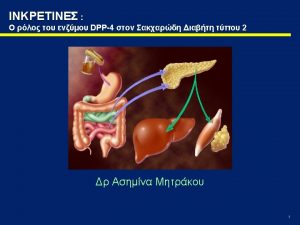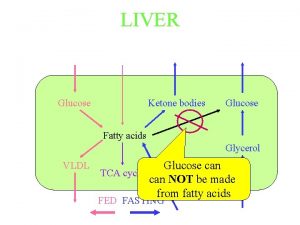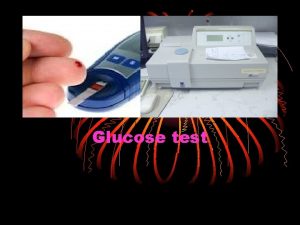Potential Pancreatic Appetizer the Almond Effect on Glucose








































































- Slides: 72

Potential Pancreatic Appetizer: the Almond Effect on Glucose Intolerance Study (AEGIS) Michael Crouch, MD, MSPH Memorial Family Medicine Residency Sugar Land, Texas STFM Meeting Minneapolis, MN May 3, 2016 1

Pre-diabetes is very common o About 30 million Americans (10% of adults) have diabetes. o About 86 million Americans (30% of adults) have pre-diabetes (borderline diabetes). 2

Pre-diabetes definition o Pre-diabetes is defined* as: n Fasting glucose of 100 -125, and/or n 2 -hour oral GTT glucose of 140 -199, and/or n Hemoglobin A 1 c of 5. 7 -6. 4 o There is no agreed-on gold standard for diagnosing pre-diabetes (or diabetes) *American Diabetes Association. Diabetes Care 2015 Jan; 38(Supplement 1): S 8 -S 16. 3

Pre-diabetes (and diabetes) heterogeneity o Pre-diabetes and diabetes are heterogenous conditions involving a variable mixture of: n Insulin resistance n Impaired insulin production and/or secretion 4

Relative contributions of insulin resistance & impaired insulin secretion 5 Saisho Y. Importance of beta cell function for the treatment of diabetes. J Clin Med 2014; 3: 923 -43.

Hygenic diabetes prevention o Although exercise, weight control, and hypoglycemic medication have been shown to prevent progression from pre -diabetes to diabetes, many patients are unwilling or unable to make good use of these options. 7

The “sleepy pancreas” effect o One of the main defects causing impaired glucose tolerance in some individuals is sluggish insulin release after carbohydrate ingestion. 8

The “pancreatic appetizer” hypothesis o “Priming the pancreatic pump” with a nutritious “pre-meal snack” 30 minutes prior to glucose tolerance testing will decrease the hyperglycemic response at one hour, more than two hours (by stimulating insulin secretion prior to the main caloric load. ) 9

Evidence of appetizer effect o Ingesting 10 g (40 kcal) of fructose 30 or 60 minutes prior to eating a high-carbohydrate test meal reduced the positive incremental area under the glucose curve (AUC) by 26%. 4 4 Heacock PM. J Nutr 2002; 132: 2601 -2604. 10

Evidence of appetizer effect o A soya-yogurt snack (30 g of soybeans & 75 g of yogurt, containing 20 g protein & 10 g CHO) 2 hours before breakfast resulted in an almost 40% reduction of postprandial glucose increment. Chen MJ. Diabetes Care 2010; 33: 2552 -4. 13

Evidence about almond effect o Lovejoy, Josse, & Jenkins showed a reduction of postprandial hyperglycemia by 21 -42% with supplementing regular meals with almonds (1 -3. 5 oz/d = 28 -100 g/d X 4 wks) Lovejoy JC et al. Am J Clin Nutr 2002; 76: 1000 -1006. Josse AR et al. Metabolism 2007; 56: 400 -4. Jenkins DJ et al. J Nutr 2006; 136: 2987 -92. 14

Evidence about almond effect o Tan and Mattes found that groups eating supplemental almonds 2 hours before lunch had mildly lower glycemic responses 60 min after a standard lunch meal. 15

Testing the “almond appetizer” hypothesis o This is the first known study of the effect of eating a small amount (½ ounce) of almonds in the “appetizer timeframe”-30 minutes prior to glucose tolerance testing (GTT) in glucose intolerant individuals. 16

The specific “almond appetizer” hypothesis o Eating ½ ounce of (12) roasted almonds 30 minutes prior to glucose tolerance testing (GTT) will: n lower mean 1 -hour glucose by 2040 mg/d. L, and n lower mean 2 -hour glucose by 1019 mg/d. L, compared to a standard GTT in glucose intolerant individuals. 17

Direct implications of the “pancreatic appetizer” hypothesis Glucose intolerant individuals who regularly ingest such a pre-meal almond snack will tend to have: o minimal change in pre-meal glucose o lower peak glucose levels one hour after eating o shorter duration of hyperglycemia 18

Potential implications of the “pancreatic appetizer” hypothesis Glucose intolerant individuals who regularly ingest such a pre-meal almond snack will tend to: o experience less glucotoxic effects of hyperglycemia on the pancreas; o preserve beta cell mass and/or function, and thus postpone the onset of type 2 diabetes. 19

Why study almonds? o I like almonds, and many of my patients like them. o Almonds are a convenient snack. o The ½ ounce “dose” was selected to minimize caloric intake impact. o Almonds are nutritionally balanced. 20

Why roasted almonds? o Roasted almonds taste better & are less likely to cause mouth itching. o Roasted almonds may have longer shelf-life, easier to store for weeks. o Roasting for 10 -12 minutes at 325 -350 degrees removes much of the water without affecting nutritional content. 21

Almond nutritional content ½ ounce of (12) almonds contains 82 kcal (kilocalories), including o 3 kcal from 0. 7 g of sugar, o 12 kcal from 3 g of protein, o 65 kcal from 7. 2 g of fat n Polyunsat. (92%, incl 27% omega 3) n Saturated (7%) o 0 kcal from 1. 7 g of fiber 22

Study site o The study was conducted at Physicians at Sugar Creek, the model family practice center for the Memorial Family Medicine Residency Program in Sugar Land, Texas. 23

Study site o Ironically for this study, Sugar Land was named for its long-time main industry, the Imperial Sugar Company. 24

Study site o Another former major Sugar Land employer, the Imperial/Central State Prison Farm, inspired prisoner Huddy Ledbetter (Leadbelly) to write his version of the folk song “Midnight Special” in the 1930’s. 25

IRB Approval o This study was approved by the University of Texas-Houston Institutional Review Board. o Written informed consent was obtained from each participant prior to their entry into the study protocol. 26

Study design o Prospective clinical crossover trial o Each participant served as their own control o A sample size of twenty (20) adult patients 27

Inclusion criteria were: o age 18 -90 o abnormal glucose tolerance test 1 -hour glucose >160, 2 -hour glucose <200, and fasting glucose <125 28

Exclusion criteria included: o currently taking any medication affecting glucose levels, including insulin, other hypoglycemic medications, and oral or injected corticosteroids; o history of almond allergy; 29

Exclusion criteria (cont’d) Exclusion criteria include: o inability to render informed consent; o inability or unwillingness to complete two oral glucose tolerance tests within four weeks; and o acute or chronic illness severity precluding participation. 30

Methods o Each participant underwent 2 oral glucose tolerarance tests (OGTT), less than four weeks apart. o A standard 75 -gram OGTT. o A 75 -gram OGTT that began 30 minutes after ingesting 1/2 oz of roasted almonds (12 average size almonds). 31

Methods To control for test sequence effect: o The standard OGTT was done first in individuals with no documented OGTT results to establish eligibility for the study & conserve grant funds o The almond OGTT was done first in individuals with documented abnormal OGTT results that made full study eligibility probable. 32

Methods To minimize variability of OGTT results, participants were asked to: o eat as they usually did throughout the study. 33

Methods To minimize variability of OGTT results, participants were asked to: o refrain from vigorous physical activity for 8 hours prior to each OGTT and to minimize physical activity during each OGTT. 34

Methods To compare potential confounding variables before each OGTT, participants completed the 14 -item Perceived Stress Scale 10 and a 24 -hour food, alcohol, and activity record for the day before each OGTT. 35

Participant incentive/reward Each participant received gift certificates (a limited VISA credit card): o $50 after the first GTT, and o $50 after the second GTT. 36

Blood sample collection o Blood was drawn by a phlebotomist in the clinic’s on-site laboratory and sent to the Memorial Hermann Southwest Hospital (17) or Quest Labs (3) for analysis. o Investigators monitored the timing of each blood sample. 37

Data analysis o The main dependent variable was the mean difference in plasma glucose 1 hour after a 75 -g OGTT glucose challenge, with vs. without preceding almond snack. 38

Data analysis o Med. Calc V. 13. 2. 2. 0 software was used to perform statistical analyses. Med. Calc Software, Acacialaan 22, 8400 Ostend, Belgium. 39

Data analysis o Student's t-test & Area Under Curve (AUC) were used to analyze the difference between standard 75 g OGTT results and OGTT results following the almond pre-load. o Statistical significance was set at P<0. 05 (2 -sided). 40

Sample size estimate o A sample size calculation was predicated on theorized mean difference (20) and observed standard deviation for GTT 1 -hour glucose (35), using actual GTT results from 70 patients who would have been eligible for this study. 42

Sample size estimate o Using alpha of. 05, power of. 80, and 2 -sided statistical significance testing, an estimated 16 subjects would be needed to demonstrate the minimum anticipated effect size (a mean 20 mg/d. L difference in onehour OGTT results produced by the almond pre-load). 43

Participant Enrollment o o o Enrolled, potentially eligible = 53 Dropped out pre 1 st/2 nd GTT =10 Ineligible due to diabetes =6 Ineligible with 1 -hr <160*) = 17 Completed Study Protocol = 20 *mean 1 -hr glucose = 129 44

Characteristics of Participants Completing Protocol o Completed 2 GTT’s: n = 20 n Family history of diabetes = 13 (65%) n Male = 13 (65%) Female = 7 (35%) n Non-Hispanic White = 11 (55%), Hispanic = 6, Asian = 2, Af-Amer = 1 n Private insurance = 9, Medicare = 9, Medicaid = 1, Uninsured = 1 n Mean age = 60. 8 (median = 65) n Mean BMI = 29. 5 (median = 29) 45 n Mean Hb. A 1 c = 6. 0 (median = 6. 1)

Glucose Intolerance Status of Eligible Enrollees o Pre-diabetes = 14 n FPG>100 & 2 -hr gluc 140 -199 = 5 n FPG>100, 2 -hr glucose<140 =4 n FPG<100, 2 -hr gluc 140 -199 =5 o Glucose intolerance, not pre-DM = 6 (Only 1 -hr glucose intolerance = 1 -hr glucose >160) 47

Results—Fasting n = 20 participants: o Mean fasting glucose = 100. 0 in the control condition (sd 9. 4) o Mean “fasting” glucose = 97. 1 30 minutes after almond ingestion (sd 7. 9) o Difference was insignificant (p=. 14) 51

Results— 1 -hour o Mean 1 -hour glucose was 37. 1 mg/d. L lower (p<0. 001) after pre-test almond ingestion than in the control GTT (154. 6 vs. 191. 7) (sd 35, 28) —a relative decrease of 19. 4% 52

Results— 2 -hour o Mean 2 -hour glucose was 19. 5 mg/d. L lower (p =. 02) after pre-test almond ingestion than in the control GTT (118. 5 vs. 138. 0) (sd 28, 35) --a relative decrease of 14. 1% 53

250. 0 Almond GTT vs Control GTT Means in Glucose-Intolerant Subjects (n = 20) Glucose (mg/d. L) 200. 0 191. 7 154. 6 150. 0 138. 0 100. 0 118. 5 100. 0 97. 1 Control GTT Almond GTT 50. 0 Fasting 1 -Hour 2 -Hour 54

Individual Results (n = 20) 1 -hour glucose differences showed o marked hypoglycemic effect (45 -110 mg/d. L) in 8 individuals o moderate hypoglycemic effect (22 -32 mg/d. L) in 4 individuals o no significant effect -14 --+7 mg/d. L) in 8 individuals ( 55

Individual Results (n = 20) 2 -hour glucose differences showed o marked hypoglycemic effect (78 -96 mg/d. L) in 3 individuals o moderate hypoglycemic effect (23 -39 mg/d. L) in 6 individuals o no significant hypoglycemic effect (-13 to +39 mg/d. L) in 11 56

Characteristics of marked responders at 1 hour No discernible responder pattern Age: 45, 47, 48, 67, 71, 76, 78, 90 Gender: Male-5, Female-3 Race/Eth: 4 Non-Hispanic white, 3 Hispanic, 1 African-American Insurance: 3 private, 4 Medicare A 1 c: 5. 3, 5. 7, 5. 8, 5. 9, 6. 1, 6. 3(x 3) BMI: 22, 23, 25, 28, 29, 31, 33, 37 57

No effect seen in a few individuals with diabetes o 3 study enrollees whose OGTTs showed diabetes did the almond OGTT. o They showed no hypoglycemic effect. Standard OGTT Almond OGTT Fasting 1 -hour 2 -hour 137 228 225 126 238 215 58

Participant #28—Excellent 1 - & 2 -Hr Glucose Tolerance Test Results 250 212 Plasma Glucose (mg/dl) 200 185 150 9/29/2015 100 105 102 100 50 0 Fasting 1 -Hr Time 2 -Hr 10/6/2015 67 y. o. Hispanic female BMI 31 A 1 c 6. 0 Fam. Hx. DM 2 parents 59

Participant #11—Excellent 1 - & 2 -Hr Glucose Tolerance Test Results Plasma Glucose (mg/dl) 250 208 200 179 150 117 114 105 100 4/17/2015 101 BMI 37 A 1 c 6. 1 Fam. Hx. DM parent 50 0 4/22/2015 47 y. o. white non -Hispanic male 1 Fasting 1 -Hr Time 2 -Hr 60

Participant #4—Excellent 1 - & 2 -Hr 76 y. o. Af -Amer male BMI 33 A 1 c 6. 3 Fam. Hx DM parent 61

Discussion o 8 of 20 (40% of) glucose intolerant individuals markedly lowered their 1 -hr glucose level by 45 -110 mg/d. L by eating 12 toasted almonds 30 minutes before oral glucose tolerance testing. o 4 of 20 (20%) moderately lowered their 1 -hour glucose level by 22 -32 mg/d. L after eating almonds. o 12 of 20 (60%) lowered their 1 -hour glucose level by 22 -110 mg/d. L (moderately to markedly). 75

Discussion o 3 of 20 individuals markedly lowered their 2 -hour glucose level by 78 -96 mg/d. L after eating 12 almonds. o 6 of 20 individuals lowered their 2 -hour glucose level by 20 -39 mg/d. L(modest) after eating almonds. o 9 of 20 (45%) glucose intolerant individuals moderately to markedly lowered their 2 -hr glucose by 20 -96 mg/d. L 30 minutes after eating 12 almonds. 76

Discussion o The results support the experimental hypothesis: Eating ½ ounce of (12) roasted almonds 30 minutes prior to glucose tolerance testing (GTT) will: n lower mean 1 -hour glucose by 20 -40 mg/d. L, and n lower mean 2 -hour glucose by 10 -19 mg/d. L, compared to a standard GTT in glucose intolerant persons who do not have diabetes. 77

Discussion o The hypoglycemic effect was less than that produced by fructose and soyayogurt pre-loads, but more than that produced by a larger almond snack (1. 5 oz) eaten 2 hrs before a meal. o An almond pre-load is more nutritionally balanced than fructose and only ½ the calories of the soya-yogurt pre-load and ¼ to ½ the calories of the almond meal supplements studied previously. 78

Discussion o Almonds can be stored and carried conveniently in a zip-lock bag. o Almonds stay fresh for several months when stored at room temperature. o Almonds can be conveniently eaten before workplace, fast food, or restaurant meals. o The 30 -minute pre-meal timing seems reasonably convenient for the average person. 79

Discussion o When bough in bulk (16 -36 oz), a one-half ounce serving of raw or roasted almonds costs 20 -30 cents, which seems practical for families at most economic levels. 80

Discussion o Main mechanism of action in positive responders may be stimulation of incretins & release of stored insulin 30 minutes sooner than that stimulated by the 75 -g glucose load. o The slightly lower (rather than higher) glucose level in the 1 st almond OGTT blood sample supports this notion. 81

Discussion Other potential mechanisms include: o Almond fiber content increasing viscosity of intestinal contents, hindering glucose absorption o Almond fat content slowing gastric emptying time, delaying glucose absorption 82

Discussion The marked differences between individual results may be attributable to non-responders having a variable mixture of: o More impaired production and release of incretins o More impaired production and/or release of insulin 83

Limitations o Single study site o Sample size relatively small o Male predominance in sample o Mostly middle-aged or elderly o African-Americans underrepresented o No extremely obese participants o Sequence was (1) standard OGTT then (2) almond GTT in 17/20 84

Limitations o Physical activity was not monitored closely during OGTT’s. o Grant funding was not sufficient to get insulin and incretin levels. o 4 participants’ samples were analyzed by a commercial lab for insurance coverage purposes; quality control measures were similar in both o Only 3 individuals with diabetes were studied. 85

Questions raised by results o Unclear how the study findings might translate to real life: Will eating almonds before a meal consistently lower peak postprandial glucose in positive OGTT responders? o Would a larger “dose” work better? o What is the optimal pre-load timing? o What other foods would have a similar or better effect? 86

Conclusion o A low-calorie almond pre-load “appetizer” showed potential as a viable option for decreasing postprandial hyperglycemia in individuals with prediabetes and/or isolated one-hour postprandial hyperglycemia. 87

Conclusion o Further study is needed to confirm and refine the role of a pre-meal appetizer in the care of prediabetes, and to investigate its potential for helping delay or avoid progression from prediabetes to diabetes. 88

“Almond Special” (to tune of “Midnight Special”) If you’re prediabetic, your sugar goes too high Every time you eat food, ‘specially cake or pie But if you eat almonds, about half an ounce, Half an hour before a meal then, your sugar may not bounce Near as high as it would have, without the appetitzer, Which wakes your pancreas. and gets it into gear. 89

“Almond Special” (to tune of “Midnight Special”) (Chorus) So let the roasted almonds. bring your sugar down. Get yourself some almonds, roast ‘em nice and brown. Let the roasted almonds. bring your sugar down. Those roasted almonds. are the everlovin’ toast of the town. 90

References o o o o o Centers for Disease Control and Prevention. National Diabetes Statistics Report: Estimates of Diabetes and Its Burden in the United States. 2014. Atlanta, GA: U. S. Department of Health and Human Services; 2014. Tabak AG, Jokela M, Akbaraly TN, Brunner EJ, Kiyimaki M, Witte DR. Trajectories of glycaemia, insulin sensitivity, and insulin secretion before diagnosis of type 2 diabetes: an analysis from the Whitehall II study. Lancet 2009; 373: 2215 -21. Diabetes Prevention Program Research Group. 10 -year follow-up of diabetes incidence and weight loss in the Diabetes Prevention Program Outcomes Study. Lancet 2009; 374: 1677– 1686. Kahn SE. The importance of β-cell failure in the development and progression of type 2 diabetes. J Clin Endocrin Metab 2001; 86: 4047 -4058. Fantus G. Glucose toxicity. Ch. 12 in Diabetes Endotext. [Internet] Accessed 23 Feb 2016. Internet: www. ncbi. nlm. nih. gov/books/NBK 278934/. Gerich JE. Is reduced first-phase insulin release the earliest detectable abnormality in individuals destined to develop type 2 diabetes? Diabetes 2002; 51: S 1: 117 -121. Kim W, Egan JM. The role of incretins in glucose homeostasis and diabetes treatment. Pharmacol Rev 2008; 60: 470 -512. Abdul-Ghani MA, De. Fonzo RA. Plasma glucose concentration and prediction of future risk of type 2 diabetes. Diabetes Care 2009; 32: S 194 -198. Heacock PM, Hertzler SR, Wolf BW. Fructose prefeeding reduces the glycemic response to a highglycemic index, starchy food in humans. J Nutr 2002; 132: 2601 -2604. Chen MJ, Jovanovic A, Taylor R. Utilitizing the second-meal effect in type 2 diabetes: practical use of a soya-yogurt snack. Diabetes Care 2010; 33: 2552 -4. 91

References o o o o o Josse AR, Kendall CW, Augustin LS, Ellis PR, Jenkins DJ. Almonds and postprandial glycemia--a doseresponse study. Metabolism 2007; 56: 400 -4. Jenkins DJ, Kendall CW, Marchie A, Josse AR, Nguyen TH, Faulkner DA, Lapsley KG, Blumberg J. Almonds decrease postprandial glycemia, insulinemia, and oxidative damage in healthy individuals. J Nutr 2006; 136: 2987 -92. Tan SY, Mattes RD. Appetitive, dietary and health effects of almonds consumed with meals or as snacks: a randomized controlled trial. Eur J Clin Nutr 2013; 67: 1205 -1214. US Department of Agriculture, Agricultural Research Service, Nutrient Data Laboratory. USDA National Nutrient Database for Standard Reference, Release 28. Version Current: September 2015. Internet: http: //www. ars. usda. gov/Services/docs. htm? docid=8964 Cohen S, Janicki-Deverts D. Who's stressed? Distributions of psychological stress in the United States in probability samples from 1983, 2006 and 2009. Journal Applied Social Psychology 2012; 42: 13201334. My Fitness Pal Internet Site. https: //www. myfitnesspal. com/ Kosaka K, Mizuno Y, Kuzuya T. Reproducibility of the oral glucose tolerance test and the rice-meal test in mild diabetics. Diabetes 1966; 15: 901 -904. Cornacchia R, Amodio ML, Colelli G. Effects of storage temperature and duration on quality of unshelled and shelled almonds. Acta Horticulturae 2012; 934: 783‐ 790. Sam’s Club internet site http: //www. samsclub. com/sams/fruit-nuts/2259. cp, accessed April 6, 2016 Amazon. com internet site http: //www. amazon. com/Natural-Raw-Almonds-Pound. Bag/dp/B 001 ESHOA 6, accessed April 6, 2016. 92

References o o o Caminhotto RDO, Lima FB. Impaired glucose tolerance in low-carbohydrate diet: maybe only a physiological state. Amer J Physiol Endocrin Metab 2013; 305: E 1521. DOI: 10. 1152/ajpendo. 00580. 2013. Short KR, Pratt LV, Teague AM. The acute and residual effect of a single exercise session on meal glucose tolerance in sedentary young adults. J Nutr Metab 2012; article ID 278678. http: //dx. doi. org/10. 1155/2012/278678. Dungan KM, Braithwaite SS, Preiser JC: Stress hyperglycaemia. Lancet. 2009; 373: 1798 -1807. Lovejoy JC, Most MM, Lefevre M, Greenway FL, Rood JC. Effect of diets enriched in almonds on insulin action and serum lipids in adults with normal glucose tolerance or type 2 diabetes Am J Clin Nutr 2002; 76: 1000 -1006. Chen CM, Lin JF, Huang CL, Hsirh AT, Weng SF, Li SC, Chao TY, Chen CY. effect of almonds on glucose regulation and CVD risk factors in patients with type 2 diabetes. FASEB J 2015; 29: Supplement 912. 3 93
 Advantages and disadvantages of glucose estimation
Advantages and disadvantages of glucose estimation Fisher projection
Fisher projection Csf analysis
Csf analysis Difference between alpha and beta glucose
Difference between alpha and beta glucose Appetizer recipes with ingredients and procedure
Appetizer recipes with ingredients and procedure Cold appertizers
Cold appertizers Makanan pembuka disebut
Makanan pembuka disebut Draw do
Draw do Hot dessert dihidangkan pada suhu ....
Hot dessert dihidangkan pada suhu .... Appetizer function
Appetizer function Appetizer accompaniment
Appetizer accompaniment What are the principles in presenting appetizer?
What are the principles in presenting appetizer? The main jobs of the large intestine are _____.
The main jobs of the large intestine are _____. Pancreatic enzymes
Pancreatic enzymes Acute pancreatitis pes statement
Acute pancreatitis pes statement Pancreatic carcinoma risk factors
Pancreatic carcinoma risk factors Pancreatic calcification
Pancreatic calcification The hepatic portal vein empties into the ____.
The hepatic portal vein empties into the ____. Pancreatic juice
Pancreatic juice Pancreatic juice
Pancreatic juice Pancreatic juice
Pancreatic juice Nucleonema
Nucleonema Daughter mother grandmother pancreatic lesions
Daughter mother grandmother pancreatic lesions Double duct sign
Double duct sign Cullen's sign
Cullen's sign Steatorrhea pictures
Steatorrhea pictures Pancreatic digestive secretions
Pancreatic digestive secretions Steatorrhoea pancreatica
Steatorrhoea pancreatica Pad sign in pancreatic carcinoma
Pad sign in pancreatic carcinoma Pancreas
Pancreas Cck function in digestion
Cck function in digestion Glucagon function
Glucagon function Stage 2b pancreatic cancer
Stage 2b pancreatic cancer Role of vitamin a
Role of vitamin a Exocrine band
Exocrine band Ileum tissue
Ileum tissue Ralph steinman pancreatic cancer
Ralph steinman pancreatic cancer Emulsification
Emulsification Electric potential
Electric potential End-plate potential vs action potential
End-plate potential vs action potential Flaccid cell
Flaccid cell Electrical potential
Electrical potential Sales potential vs market potential
Sales potential vs market potential Types of graded potentials
Types of graded potentials Saltatory conduction
Saltatory conduction Electric potential from electric field
Electric potential from electric field Rocuronium dose
Rocuronium dose How does water potential affect osmosis
How does water potential affect osmosis Equipotential lines
Equipotential lines Osmotic potential vs water potential
Osmotic potential vs water potential Definition of graded potential
Definition of graded potential Electrostatic potential energy definition
Electrostatic potential energy definition Action potential resting potential
Action potential resting potential Water potential
Water potential Unit of potential
Unit of potential Source of bioelectric potential
Source of bioelectric potential Difference between action and graded potential
Difference between action and graded potential Pe=qed
Pe=qed Action potential resting potential
Action potential resting potential Graded potential vs action potential
Graded potential vs action potential Two almond shaped neural clusters
Two almond shaped neural clusters Almond e powell
Almond e powell Esperanza rising project ideas
Esperanza rising project ideas Perkembangan trias politika menurut gabriel almond
Perkembangan trias politika menurut gabriel almond Gabriel almond
Gabriel almond Two almond shaped neural clusters
Two almond shaped neural clusters Russell almond
Russell almond Steady precipitation preceding a front is an indication of
Steady precipitation preceding a front is an indication of Lower level brain structures
Lower level brain structures Almond sentence
Almond sentence Are almond eyes dominant
Are almond eyes dominant Kategori budaya politik dari almond dan powell
Kategori budaya politik dari almond dan powell Seven i am statements of john
Seven i am statements of john

